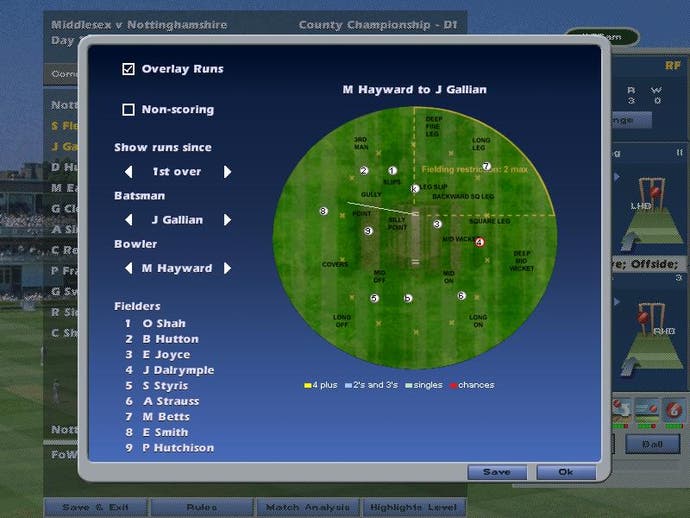International Cricket Captain 2006
Tricky wicket.
International Cricket Captain 2006 is the sort of game that, as a reviewer, you look forward to demolishing with gleeful relish - like a be-capped 1950s schoolboy greedily eyeing up a rival's dangling conker. It's a budget management game, developed by a handful of unknowns. About cricket, that most treacle-paced of sporting pursuits. With creakingly animated sprites (sprites!) instead of beautiful 3D graphics. Did we mention it's endorsed by South African Englishman Kevin Pietersen MBE, a chap so self-obsessed he allegedly insists that girlfriends shout out his name during intercourse? Good golly gosh, we were so ready to royally rip this game a new one.
But we can't, because it's actually not that awful.
As you'll no doubt have guessed from its title, the game puts you in the pads and, erm, box of a cricket captain. At the beginning of the single-player campaign you get the choice between taking over a county side and earning the right to lead your country (the full "career" mode), taking over England or another nation straight from the off, or taking charge of both a country and a county at the same time. There's one additional mode, where you relive well-loved international test series of yesteryear - although, rather bizarrely, you're limited to those involving either Pakistan or Sri Lanka, so last year's blistering Ashes series is off the menu.
Once you've made your choice, the game becomes a straightforward sports management sim, divided between the routine tasks of captaincy and the matches themselves. The former consists of picking a squad, signing new players, selecting the batting order, preparing your pitch and overseeing training. Such actions don't necessarily have to be boring (Football Manager manages to make even the mundane absorbing) but they are in this case. They feel rudimentary, as if the developers figured they'd better put some day-to-day management bits in there for the sake of completeness, but made them as basic as possible at the same time.

The whole thing isn't helped by the fact that the shockingly low-res menus make the pointer and every bit of text LOOK REALLY MASSIVE on any monitor not built before the end of the Cold War. The effect is so eye-assaultingly bad that switching to windowed mode becomes an absolute priority.
Matches are where the game really begins. You're handed a decent measure of control over how your team bats and bowls, mainly in the "aggression" setting. If you're playing in your first innings four-day test match and batting, it's probably best to keep your batsmen on low aggression, perhaps three bars out of the available eight. The run-rate will be slow but steady, and there'll be fewer mistakes. In a 50-over one-day match, on the other hand, you'll need to start off quickly - so up goes the aggression and in come the mistakes.
Bowling revolves around a similar system - aggressive play leading sometimes to more wickets being taken but also to more runs being scored by the opposition - and naturally there are other factors to consider: the type and skill of the bowler you're using; the weather conditions; the state of the pitch and the ball.

This system works reasonably well, although you sometimes get the feeling that your decisions don't have much effect on how the match plays out. Robert Key's tendency to swing wildly at the ball no matter his instructions proved particularly annoying - the tubby one contrived to hammer out a series of single-figure scores when opening for my Kent side, and I could seemingly do nothing to curb his suicidal tendencies.
As you might have gathered from the mention of sprites and 800x600 resolutions, the game's presentation is primitive. There's some crowd noise, for example, but an excellent six will often be rewarded with the sort of deathly silence that would greet Mel Gibson's arrival at a Bar Mitzvah. Still, there's an old-fashioned charm here, a certain pleasure in hearing the clonk of leather on willow as a blocky, brown-haired sprite representing Freddie Flintoff hits another square cut over the boundary. You get some basic commentary from the BBC's Jonathan "Aggers" Agnew too, which doesn't hurt.
Charm will only get you so far, though, and it's hard to imagine anyone but the most diehard of cricket fans wanting to play through more than a season or two - there just isn't the depth of a Football Manager here, or the same feeling of reward when you adopt a new strategy and it pays off. Part of it is the fact that cricket isn't as tactically rich or physically dynamic a sport as football and part of it is simply that this game isn't detailed or complex enough.







